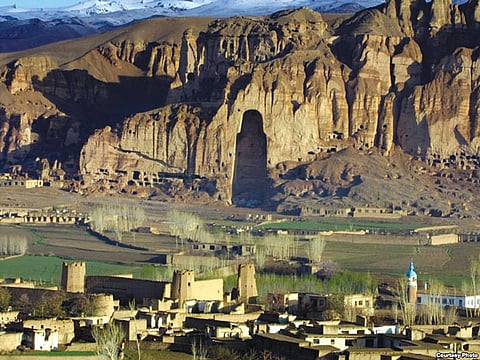They issued me the last ticket to see the Great Buddha. Then they collected the stubs and the visitor's books and bundled them into the sacks of documents to be buried. The remaining staff of the Department for Preservation of Historical Monuments even had orders to hide things as innocuous as the books recording the impressions of the Bamiyan monuments from visitors from six continents. A potato patch will be the resting place for the archives documenting 20 years of war.
I was pleased to have a chance to wander round the site again. The rock-cut Buddhas of Bamiyan are of great cultural significance, and were once the centre of Afghanistan's mass tourist trade. In historical times, these Buddhas were targeted by zealots. Their survival (including several friezes of original paint work) through the two decades of war is amazing. But once again there is fear that zealous conquerors might try to prove their anti-idolatry credentials by destroying them.

